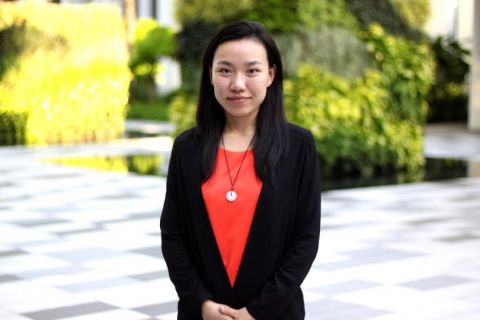
The SMU Centre for Marketing Excellence is partnering with Asia’s luxury sector to navigate trends that are changing the face of retail.

By David Turner
SMU Office of Research – Asia’s love affair with all things luxury—bags, watches, perfumes and clothes—is no secret. According to some estimates, 37 percent of the global luxury market lies in the shopping malls and streets of the Asia-Pacific, and grows about 7 to 8 percent a year.
But the Internet, mobile and millennials are turning the retail sector upside down and, just like any retailer, luxury brands have no choice but to adapt. This requires some hard thinking and mindset changes, not least to solve the conundrum of achieving growth while maintaining exclusivity.
The need for new thinking based on high quality academic research about the luxury brand sector and the Asian market led to the establishment of the LVMH-SMU Asia Luxury Brand Research Initiative, a partnership between Singapore Management University (SMU) and LVMH Moët Hennessy Louis Vuitton SA (LVMH), the stable of many of the world’s most popular luxury brands.
“The luxury market has not been studied rigorously for a long time. We still have a lot to learn about why customers will pay US$5,000 for a bag when you can get a functional one for much less,” says Professor Srinivas K Reddy, director of SMU’s Centre for Marketing Excellence. His vision is to make Singapore the research hub for the global luxury market.
When asked to explain Asia’s penchant for luxury brands and its rise as the market driver, Professor Reddy notes, “The western economies went through a similar phenomenon; success was determined by the accumulation of material wealth and all the things associated with it—what you wear, what you drive, where you live. Japan went through it.” Now, he says, it is the turn of the new kids on the block: India, China and Indonesia.
Today it’s vogue, tomorrow it’s not
While it is important to understand what drives success for the luxury market, the more urgent focus of the LVMH-SMU Initiative is to examine the future, and the forces that would affect the market and change its landscape. “The luxury sector faces a host of challenges—the changing generation of customers, digital retail, and what it means for the bricks and mortar retail space,” says Professor Reddy.
The Initiative’s first step is to start off with Singapore, a study on the Asian luxury brand customers and their perceptions of luxury—what luxury means to them and what brands they would consider to be luxury brands. Having just completed the study with interviews, focus groups and a survey, the Initiative plans on collecting data at least once a year to track developments about the customers’ luxury brand perceptions, their luxury purchase intentions and preferred retail environments. With this data, the Initiative hopes to track the challenges that face the industry.
First, there is changing demographics, says Professor Reddy. “We need to understand the millennials. They will not behave like their parents do. They may not be buying luxury products now but they are an aspirational group whom we need to understand better in terms of their perceptions, what influences them and how they buy. We need to prepare for the future.”
Second, the future is all about going digital and mobile, a game-changing meteorite putting bricks and mortar retail stores under pressure, but which, says Professor Reddy, many retailers may still be underestimating. He points to China, describing it as a nation of online shoppers and surprisingly advanced. “China skipped a generation and went straight to mobile,” he says.
Integrating online and offline shopping
To cope with and thrive in this new marketplace, Professor Reddy believes the question is how to integrate the online and offline worlds. In his view, the key is for stores to create an experience that people love and make them want to come back.
“When the Apple stores opened, analysts were skeptical and said they would not survive. They were of the view that it is expensive to maintain the stores full of expensive goods. And Apple staff, as they are not rewarded by in-store sales, have no pressure to sell.” Professor Reddy explains. “However, what the analysts were missing is that the purpose of the Apple stores is for people go to the physical shops, learn about the product, have a good experience – it doesn’t matter whether people buy there or online.”
Interestingly, retail success poses another conundrum for the luxury market. Some luxury brands have gone public and face constant pressure to grow their sales and value for their shareholders. But growth endangers a luxury brand’s most prized possession—exclusivity.
Growth versus exclusivity
Finding growth strategies around this issue is the aim of a second study to be undertaken as part of the Initiative, led by doctoral student Tan Yong Chin, along with Kapil Tuli, Associate Professor of Marketing at SMU, and Mark Ritson, Associate Professor of Marketing at the Melbourne Business School and former in-house professor for LVMH.
This project will explore strategies to succeed at a most difficult task, says Professor Tuli. “It’s nearly impossible to grow sales without using mass-market channels, but greater reach harms perceptions of quality and exclusivity.” His project will use in-depth interviews with brand managers across the world to tap into their mental models and learn from the theories they are putting into use.
Close engagement with industry is key to the Centre’s research on these issues, as is cooperation throughout the value chain. At a recent APAC Retail Summit, Professor Reddy was very interested to seek out manufacturers and retailers whom the Centre could work together to find ways to adapt to the future landscape.
But even as malls continue to bloom across Singapore’s landscape, what is the future for brick and mortar retailers? Professor Reddy says we have yet to see how online retail will change the footprint of retailers. “It may be more about the experience that they can create offline, and whether the purchase is made online or offline does not matter.”
What will not change, he says, is the importance of retaining the best talent, and this is another important area of collaboration under the Initiative. Professor Reddy says the Initiative will help gear up skill sets so that the sector can do a better job of addressing these issues. “Traditional business school students might not have the training for working in the luxury market. The products are different. The customers are different. Why are they willing to pay $5,000 for a bag? How do you make the purchase and subsequent enjoyment and experience attractive? How do you build the right retail environment and service to accomplish this? Preparing the next generation of talent to manage and grow this exciting industry is important to us,” he says.
Professor Reddy is very optimistic about the future of the Initiative itself, believing that his team is on the cusp of something big. “We can create a global network of researchers and we will be at the center of this knowledge on luxury.”
See More News
Want to see more of SMU Research?
Sign up for Research@SMU e-newslettter to know more about our research and research-related events!
If you would like to remove yourself from all our mailing list, please visit https://eservices.smu.edu.sg/internet/DNC/Default.aspx

